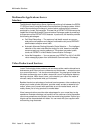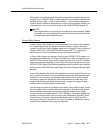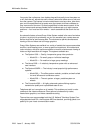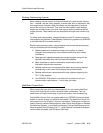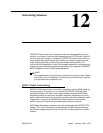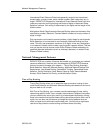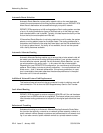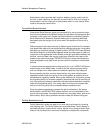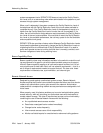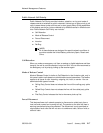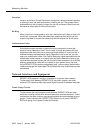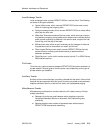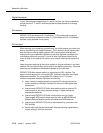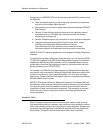
Networking Solutions
555-230-024
12-4 Issue 5 January 1998
Automatic Route Selection
Automatic Route Selection routes public network calls on the most desirable
(usually the most economical) trunking facilities available on your DEFINITY ECS
when the call destinations are accessible through your public network.
DEFINITY ECS supports up to 640 routing patterns. Each routing pattern consists
of up to 16 routing preferences (types of facilities) set up in the order you want
them checked when a call is placed. Typically, the least expensive facility will be
first on the list; the most expensive will be last.
If Generalized Route Selection is not being used when a call is made, the system
selects a routing pattern based on the digits dialed. The routing preferences in
that pattern are checked in the order they were listed, and the first available facil-
ity is used to place the call. If a facility is not available, the call can be queued
until a facility becomes available.
Automatic Alternate Routing
Automatic Alternate Routing enables you to ensure that private network calls will
be routed over the various trunking facilities available in your private network in
the most effective manner possible. As with Automatic Route Selection, you set
up various patterns for routing calls — in this case, with the private network.
Depending on your DEFINITY ECS configuration, you can have up to 640 routing
patterns. Each pattern includes a primary preference — the most preferred and
direct route — and 15 alternate preferences. If the primary preference in a pat-
tern is unavailable, the system searches the alternate preferences in the speci-
fied order until it finds one available.
Additional Network Feature Path Replacement
This feature allows active calls to be re-connected in order to obtain a more effi-
cient connection. This is done via QSIG Supplementary Service Call Transfer.
Look Ahead Routing
DEFINITY ECS tries again to route an outgoing ISDN-PRI call if the call has been
rejected from an ISDN trunk due to congestion. This feature allows you to admin-
ister alternate routing preferences or to specify if the original path should be tried
again.
Subnetwork Trunking
Subnetwork trunking is an Automatic Alternate Routing/Automatic Route Selec-
tion function that typically converts an on-network (private network) number to a
public network number (based on patterns and preferences) for off-network rout-
ing. It can also convert a public network number to a private network number.



